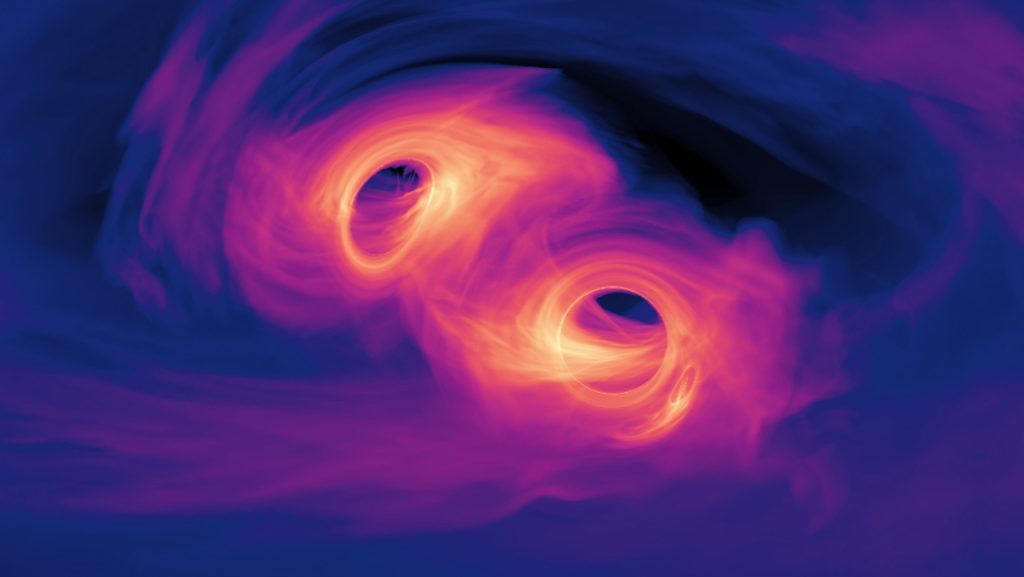Could This New Research Finally Solve the “Three-Body Problem”?
The Three-Body Problem has been one of the most infamous and long-standing mysteries in theoretical physics and mathematics. Recent research offers new hope in solving this problem by discovering isles of regularity within a sea of chaotic behavior, leading to deeper understanding and potentially major breakthroughs in astrophysics. These findings could revolutionize our understanding of gravitational waves and other fundamental phenomena in the Universe.
Summary
- The Three-Body Problem involves predicting the behavior of three gravitationally bound objects.
- Historically, it has been considered unsolvable due to its chaotic nature.
- Recent simulations, conducted by an international team led by Alessandro Alberto Trani, show glimpses of predictability within the chaos.
- The research identifies “isles of regularity”, areas where the interaction between objects follows a predictable pattern.
- Millions of simulations were run using Tsunami, a software that simulates astronomical movements.
- These findings could have important implications for our understanding of gravitational waves and black hole collisions.
- Predicting these regularities could be crucial in future astrophysical models.
- The challenge remains to integrate these findings with statistical methods to provide more accurate predictions.
- The study has set a new research direction in solving this complex problem.
- The Three-Body Problem is not just theoretical—it affects real-world phenomena in the Universe.
- Trani’s team’s research was supported by institutions like the Niels Bohr Institute and NASA.

Introduction
For centuries, scientists have been perplexed by the Three-Body Problem, a theoretical conundrum that has eluded complete understanding. Despite the mastery of two-body interactions, the introduction of a third object into the equation has been notoriously unpredictable. The problem involves three gravitationally bound objects whose behavior evolves chaotically, making it difficult to predict how they will move over time.
While the problem has fascinated mathematicians and physicists for centuries, recent research led by Alessandro Alberto Trani, in collaboration with various international institutions, suggests that there may be more to the story than initially thought.
The History of the Three-Body Problem
The Three-Body Problem dates back to Isaac Newton, whose law of universal gravitation laid the foundation for understanding the interactions between objects in space. The two-body problem, which describes the gravitational interaction between two objects, can be solved with relative ease using Newton’s laws. However, when a third object is added to the system, the interactions become much more complicated.
For centuries, the Three-Body Problem has remained one of the most famous unsolved problems in theoretical physics. Mathematicians and physicists have tried to develop solutions, but the chaotic nature of the problem has made it difficult to find a general solution.
“The Three-Body Problem is one of the most famous unsolvable problems in mathematics and theoretical physics.” – Alessandro Alberto Trani
In the novel The Three-Body Problem by Chinese author Liu Cixin, this issue is fictionalized, with a star system where three stars orbit each other, causing unpredictable periods of destruction on an orbiting planet. This story brought renewed public interest to the real-world scientific problem that has puzzled scientists for years.
Recent Research Breakthrough
In recent years, researchers have turned to computer simulations in an attempt to solve the Three-Body Problem. An international team, led by Alessandro Alberto Trani at the Niels Bohr Institute and supported by organizations like NASA and the Okinawa Institute of Science and Technology, has conducted millions of simulations to explore the interactions of three gravitationally bound objects.
The research involved using Tsunami, a software developed by Trani, which calculates the movements of astronomical objects based on known physical laws such as Newton’s Law of Universal Gravitation (reference) and Einstein’s Theory of General Relativity. The simulations focused on various parameters, including the positions of two co-orbiting objects and the angle of approach of a third object.
The results were surprising. While the general understanding of the Three-Body Problem suggested complete chaos, the simulations revealed “isles of regularity”—small regions within the chaotic behavior where the motion of the objects could be predicted.
Understanding Isles of Regularity
These isles of regularity represent specific conditions under which the interactions between three objects follow a predictable pattern. These patterns depend on factors such as the objects’ speed, position, and angle of approach. This discovery marks a significant step forward in understanding this complex problem.
“But our millions of simulations demonstrate that there are gaps in this chaos – ‘isles of regularity’ – which directly depend on how the three objects are positioned relative to each other when they meet, as well as their speed and angle of approach.” – Alessandro Alberto Trani
The findings have the potential to reshape our understanding of the Three-Body Problem, as well as other chaotic systems in physics. These isles of regularity offer new hope that a solution to the problem may one day be found, or at least that more predictable models can be developed.
Read more on the Niels Bohr Institute’s news page.

Implications for Astrophysics
The Three-Body Problem is not just a theoretical curiosity. It has real-world implications for our understanding of phenomena such as gravitational waves, which are ripples in space-time caused by the movement of massive objects, such as black holes or neutron stars.
In particular, the interactions of black holes as they approach and merge could be better understood by applying the findings from this new research. When three massive objects, such as black holes, interact gravitationally, the forces at play are immense. Understanding these interactions could provide critical insights into how gravitational waves are generated and how they propagate through space.
For more insights, refer to the research article in Astronomy & Astrophysics here.
Challenges and Future Research
Despite the promising findings, there are still many challenges ahead. The researchers acknowledge that the isles of regularity complicate traditional statistical methods used to predict the outcomes of chaotic systems. As Trani explained, the introduction of regularity into the chaos disrupts statistical probability calculations, making it difficult to predict the outcomes of three-body encounters accurately.
“Our challenge now is to learn how to blend statistical methods with the so-called numerical calculations, which offer high precision when the system behaves regularly.” – Alessandro Alberto Trani
The next step for researchers is to integrate these regularities into existing models, a process that will require further study and innovation. However, the discovery of these isles of regularity offers a glimmer of hope that a deeper understanding of the Three-Body Problem is within reach.
You can find more about their approach from the Research Center for the Early Universe and Okinawa Institute of Science and Technology here.
Table 1: Key Differences Between Two-Body and Three-Body Interactions
| Aspect | Two-Body Problem | Three-Body Problem |
|---|---|---|
| Predictability | Predictable and solvable using Newton’s laws | Chaotic and difficult to predict |
| Number of Objects | Two | Three |
| General Solution | Exists | No general solution exists |
| Example in Nature | Earth and Moon orbiting the Sun | Three black holes interacting in space |
Table 2: Research Institutions Involved in the Study
| Institution | Role |
|---|---|
| Niels Bohr Institute | Lead research and simulations |
| Research Center for the Early Universe | Theoretical framework and simulations |
| Universidad de Concepción | Astrophysical models |
| American Museum of Natural History | Research collaboration |
| NASA’s Ames Research Center | Support in modeling and astrophysical simulations |
The discovery of isles of regularity in the otherwise chaotic world of the Three-Body Problem represents a major step forward in our understanding of gravitational interactions. While this research does not yet provide a complete solution, it offers a new avenue of exploration for physicists and mathematicians. As researchers continue to study these findings, they may unlock deeper insights into gravitational waves, black hole mergers, and other phenomena in astrophysics.
The road ahead is challenging, but this breakthrough has set the stage for new discoveries in both theoretical physics and real-world applications. Understanding these intricate systems could have profound effects on our knowledge of the Universe.

Fun Facts
- The Three-Body Problem has been a topic of scientific discussion since the time of Isaac Newton.
- The concept inspired the science fiction novel The Three-Body Problem, which was later adapted into a popular Netflix series.
- Some researchers believe that a better understanding of the Three-Body Problem could help explain the formation of planetary systems in other galaxies.
References
- Newton’s Law of Universal Gravitation
- Einstein’s Theory of Relativity
- Niels Bohr Institute
- Astronomy & Astrophysics Journal
- University of Tokyo Research Center



